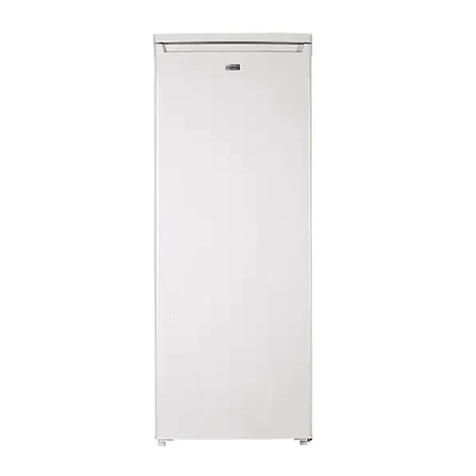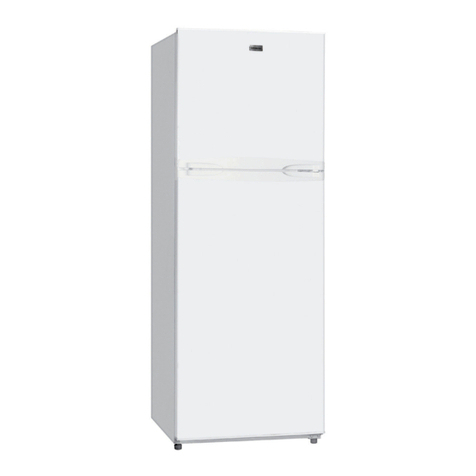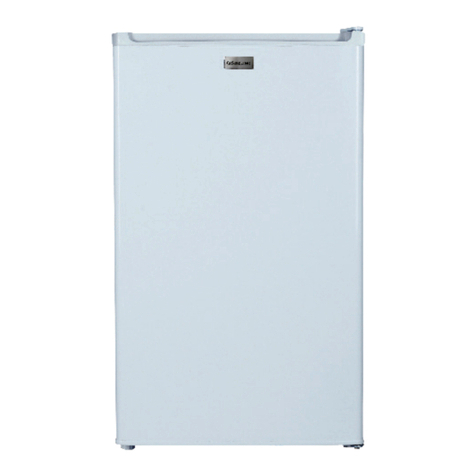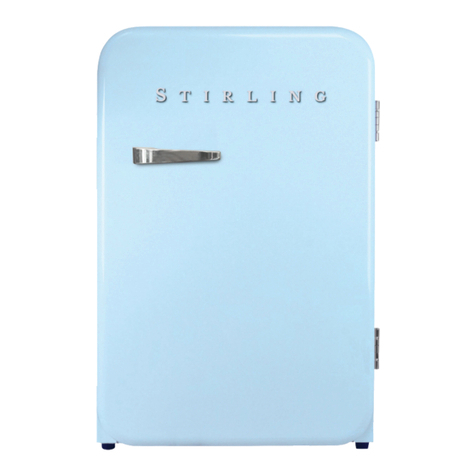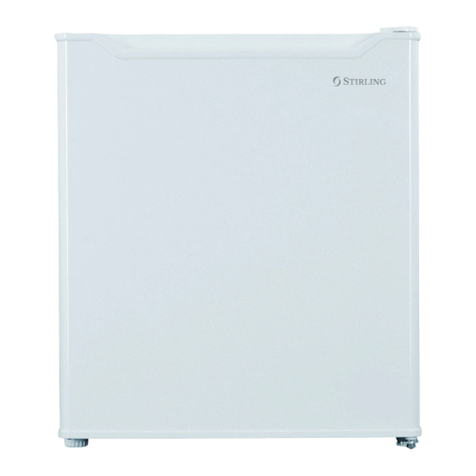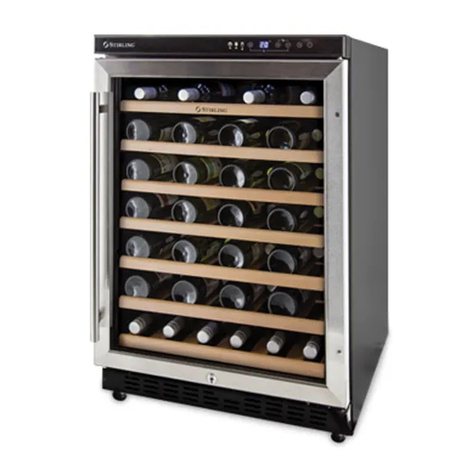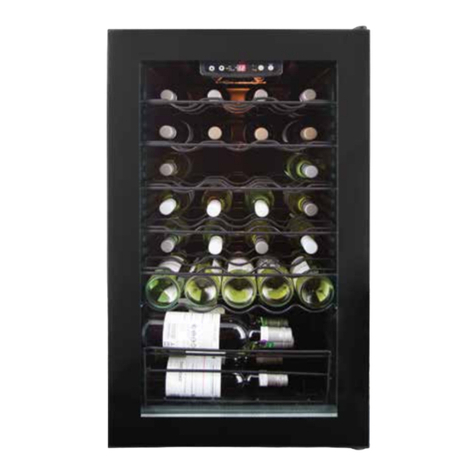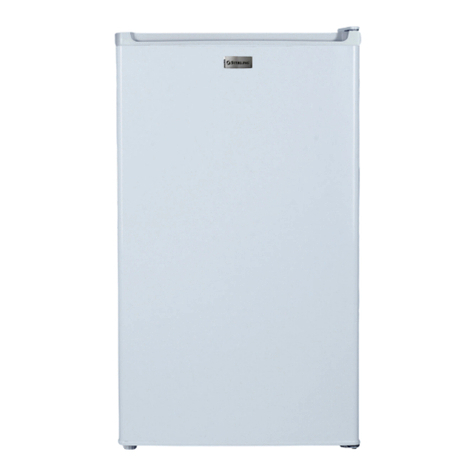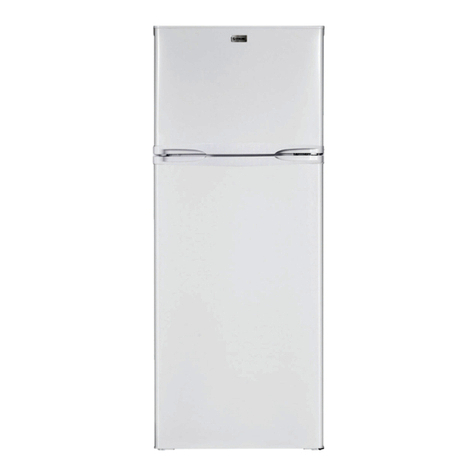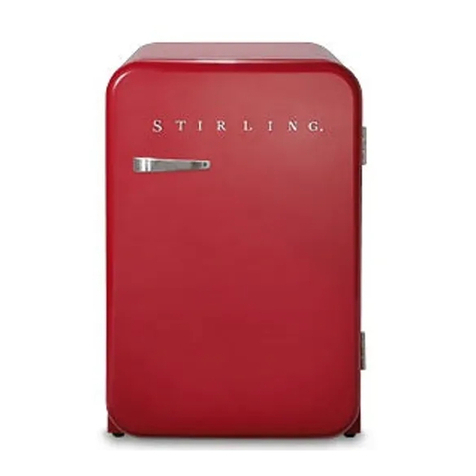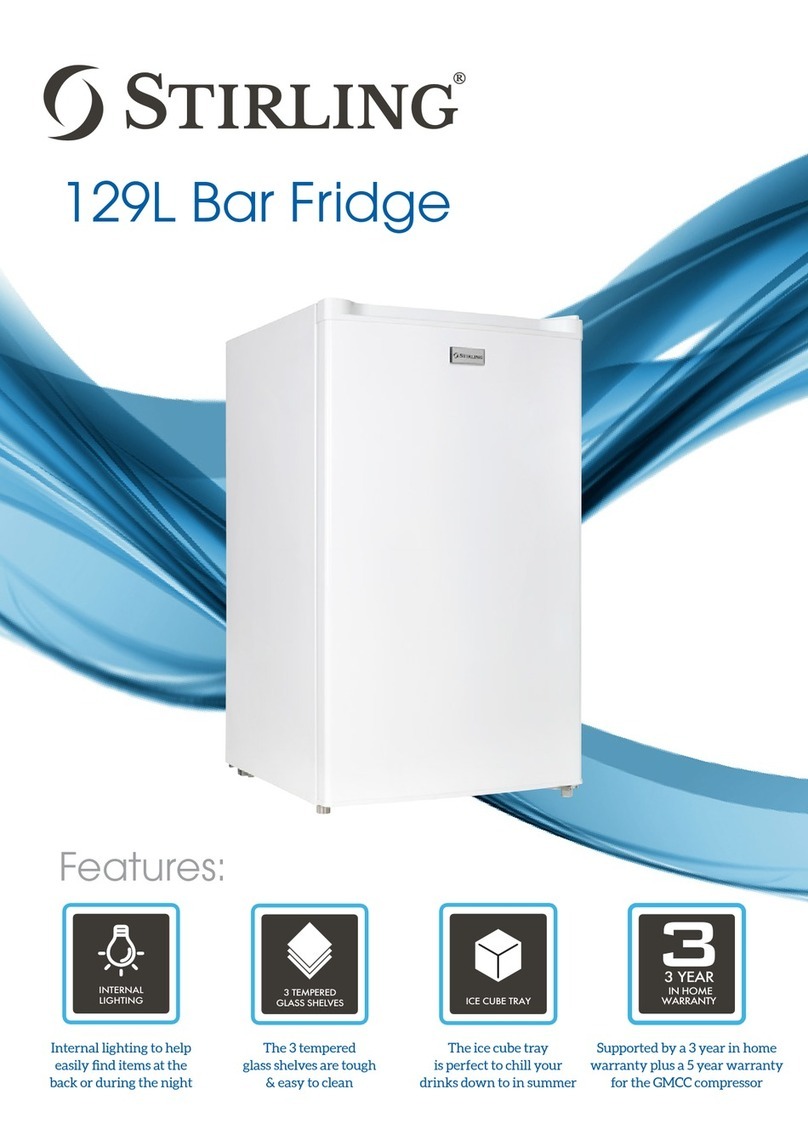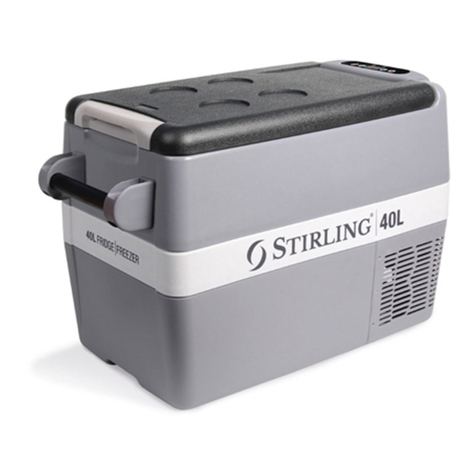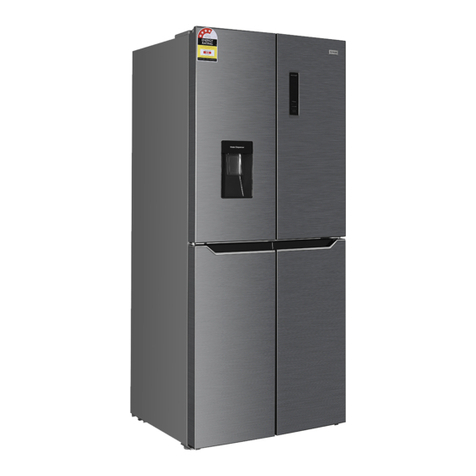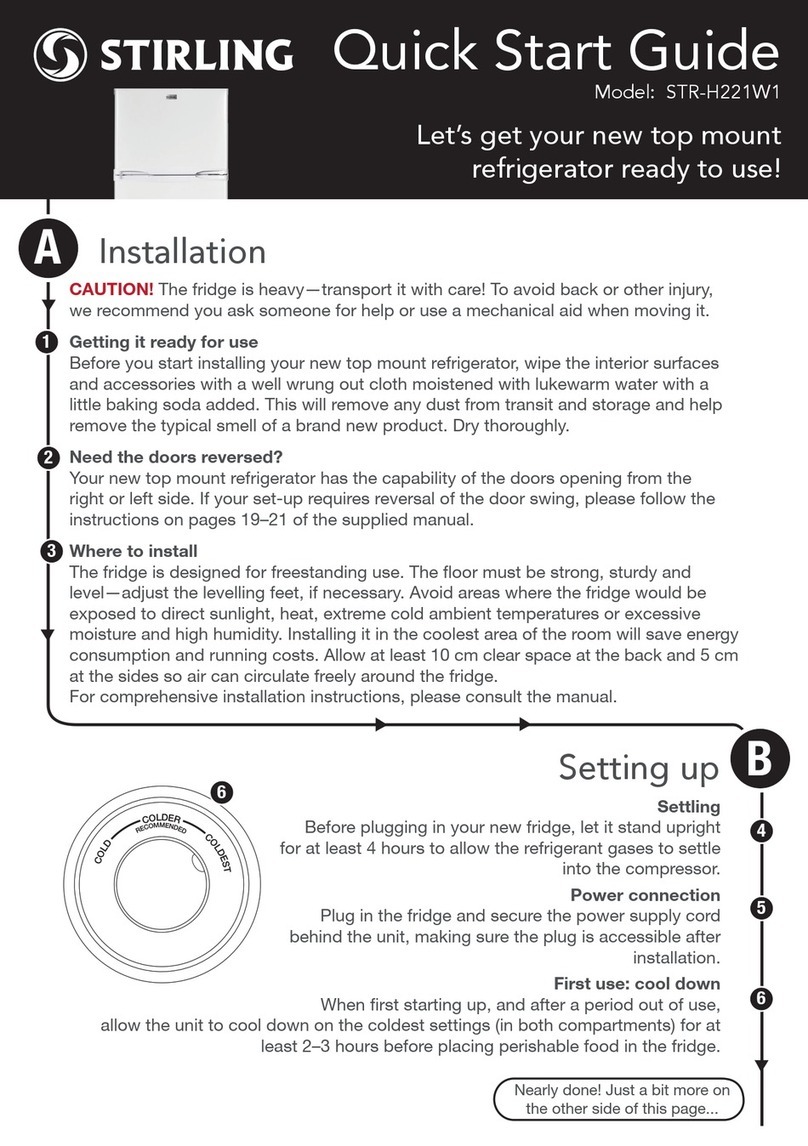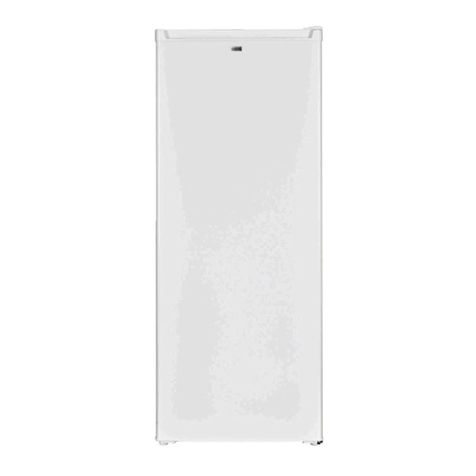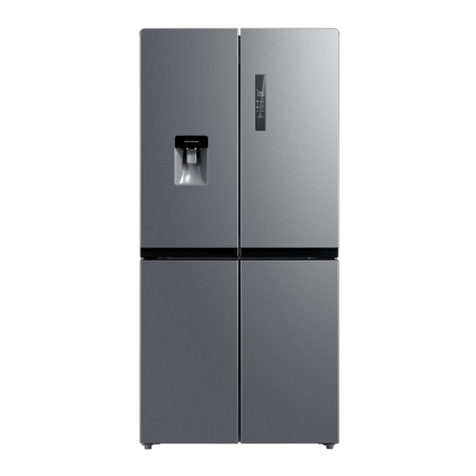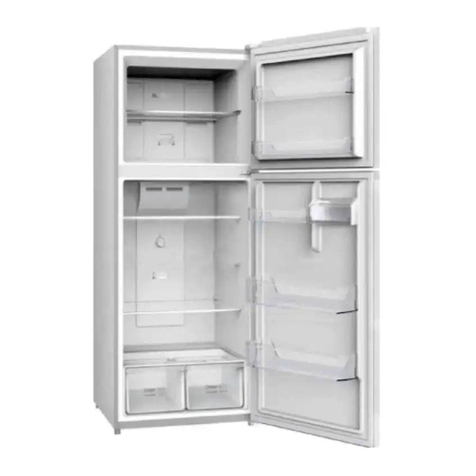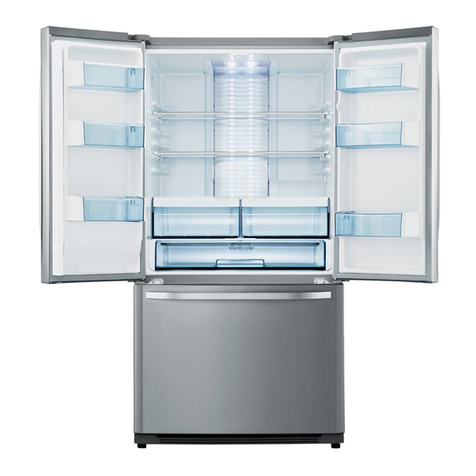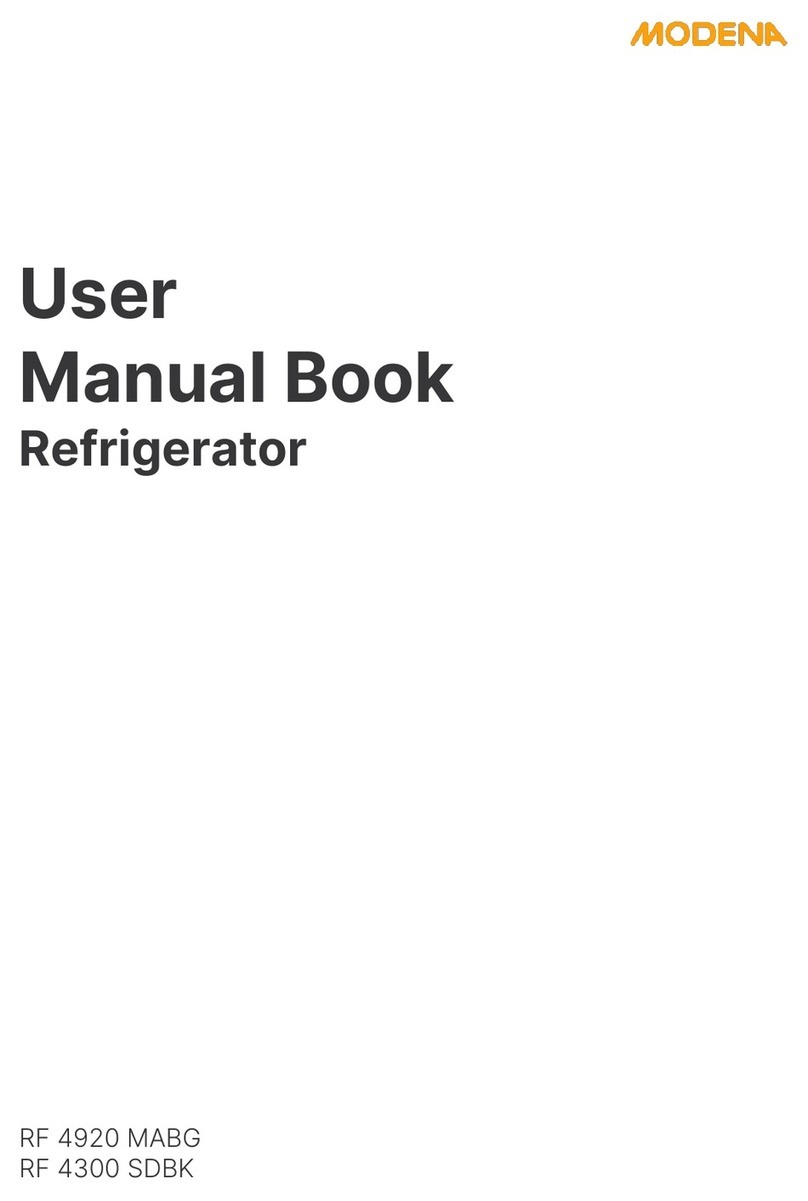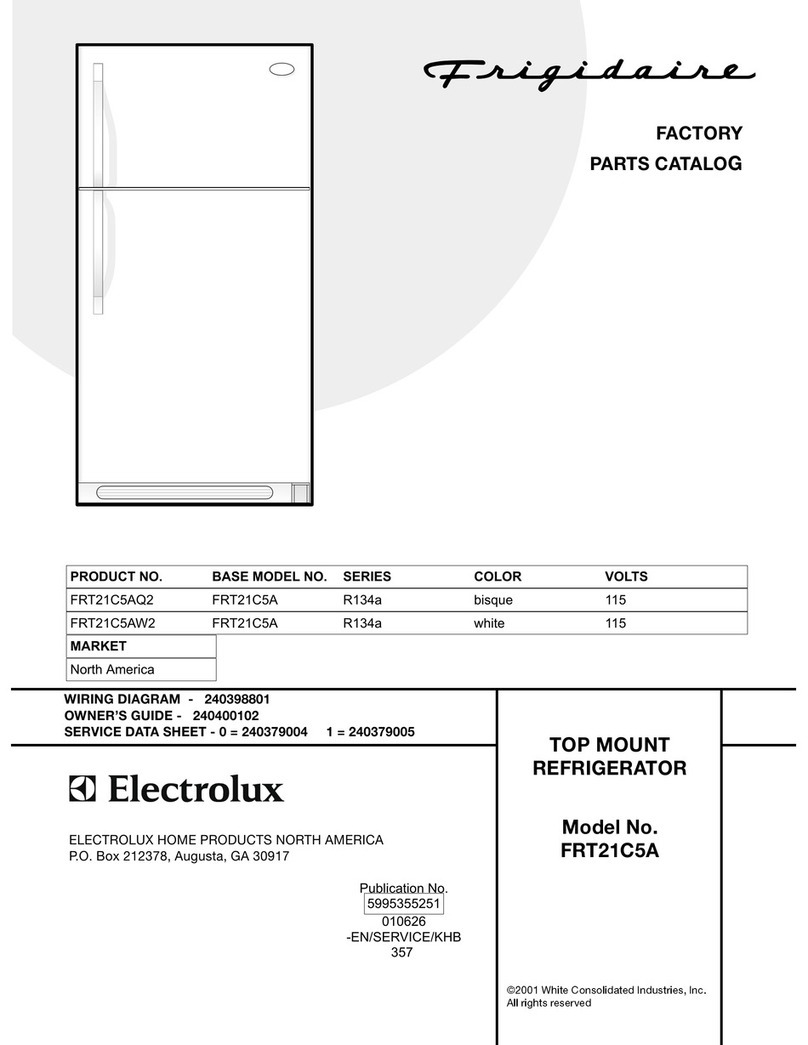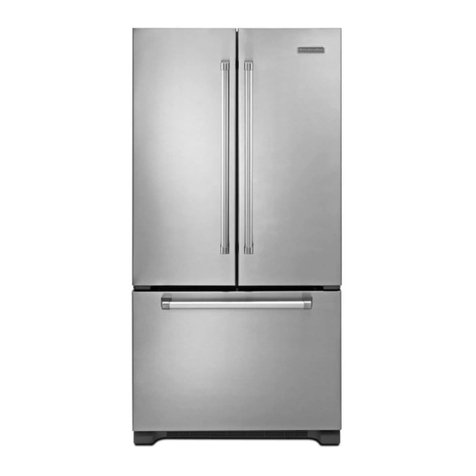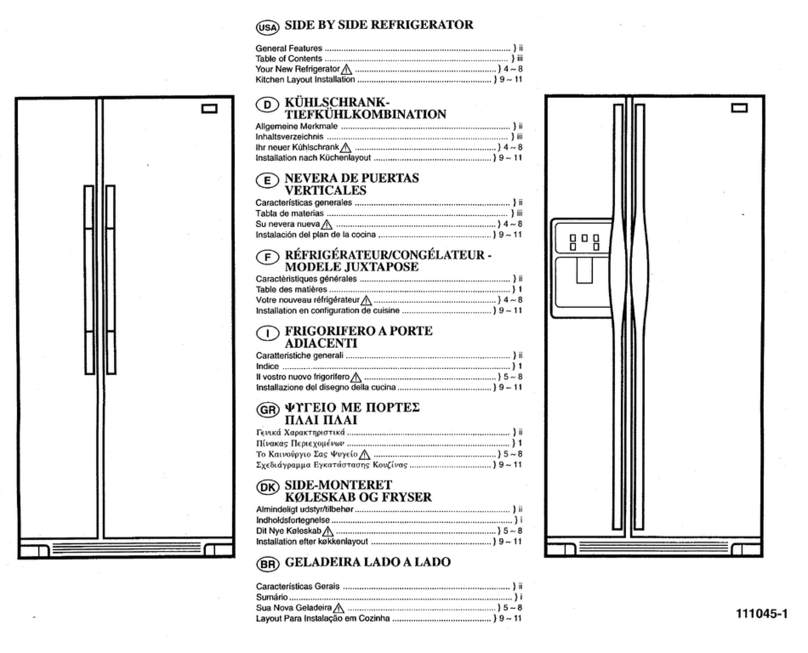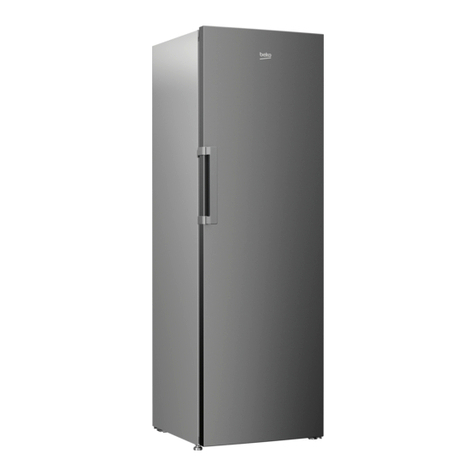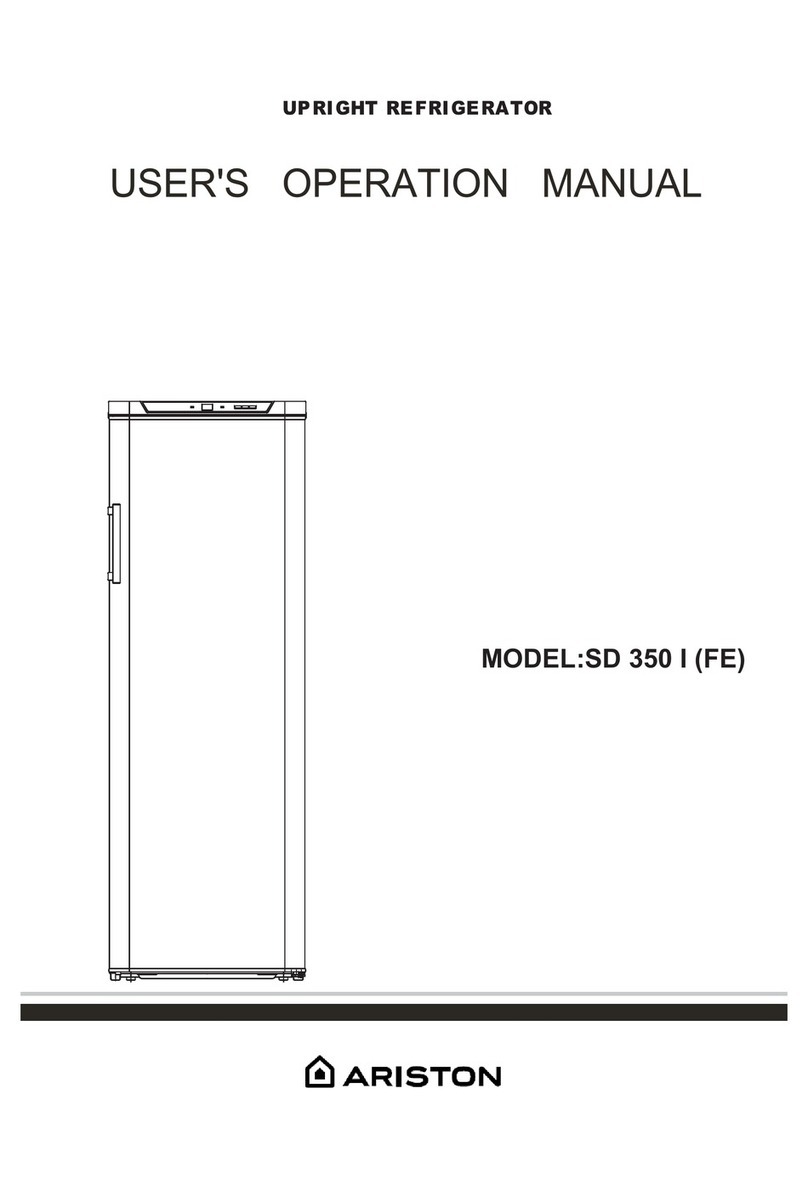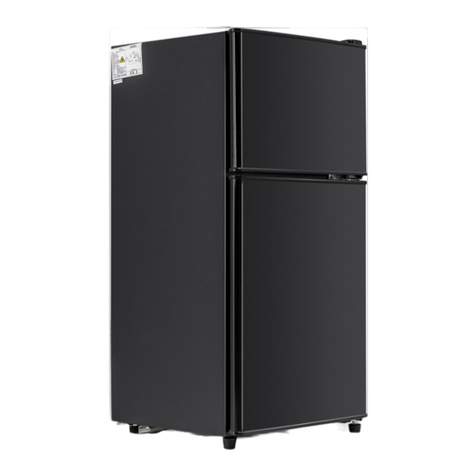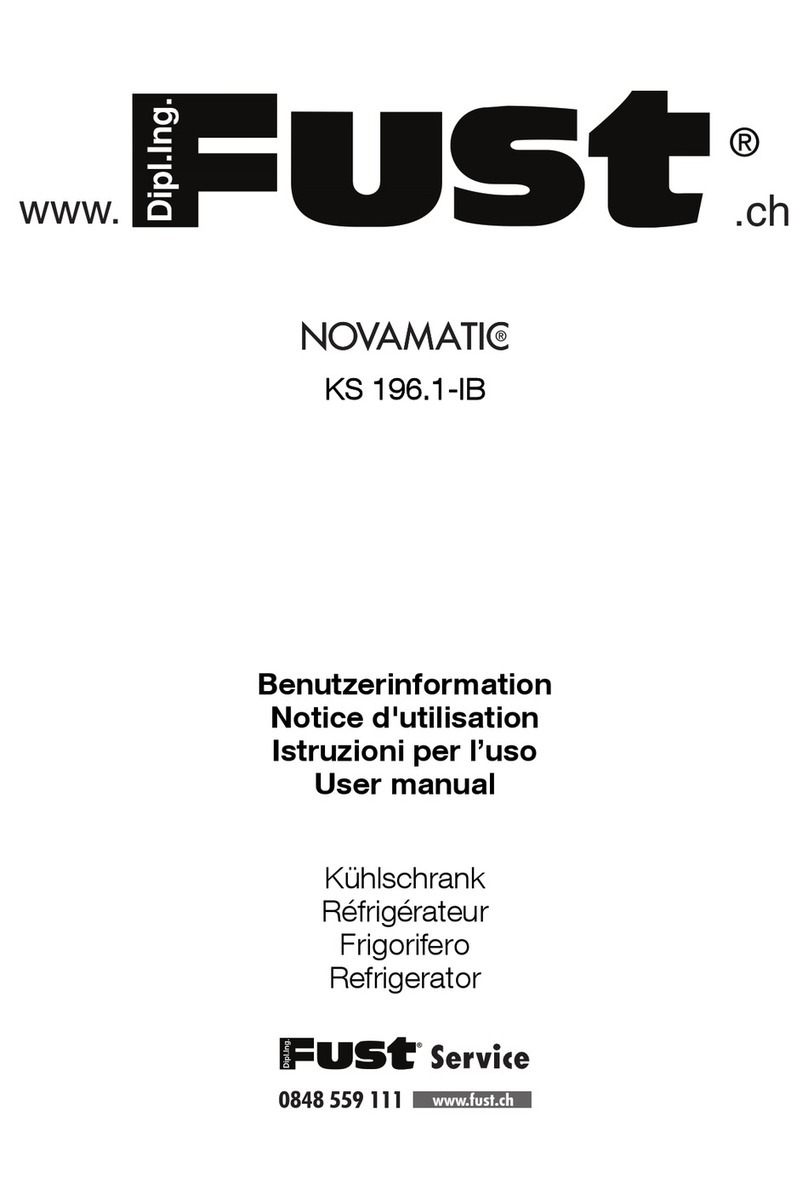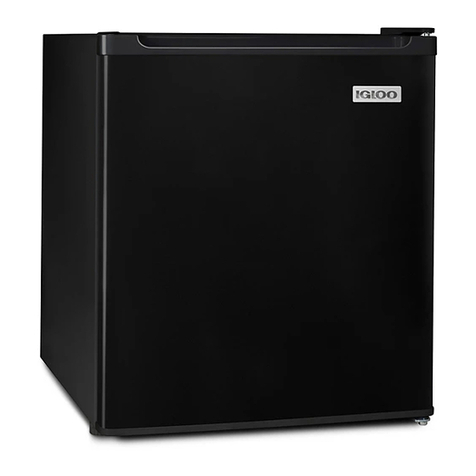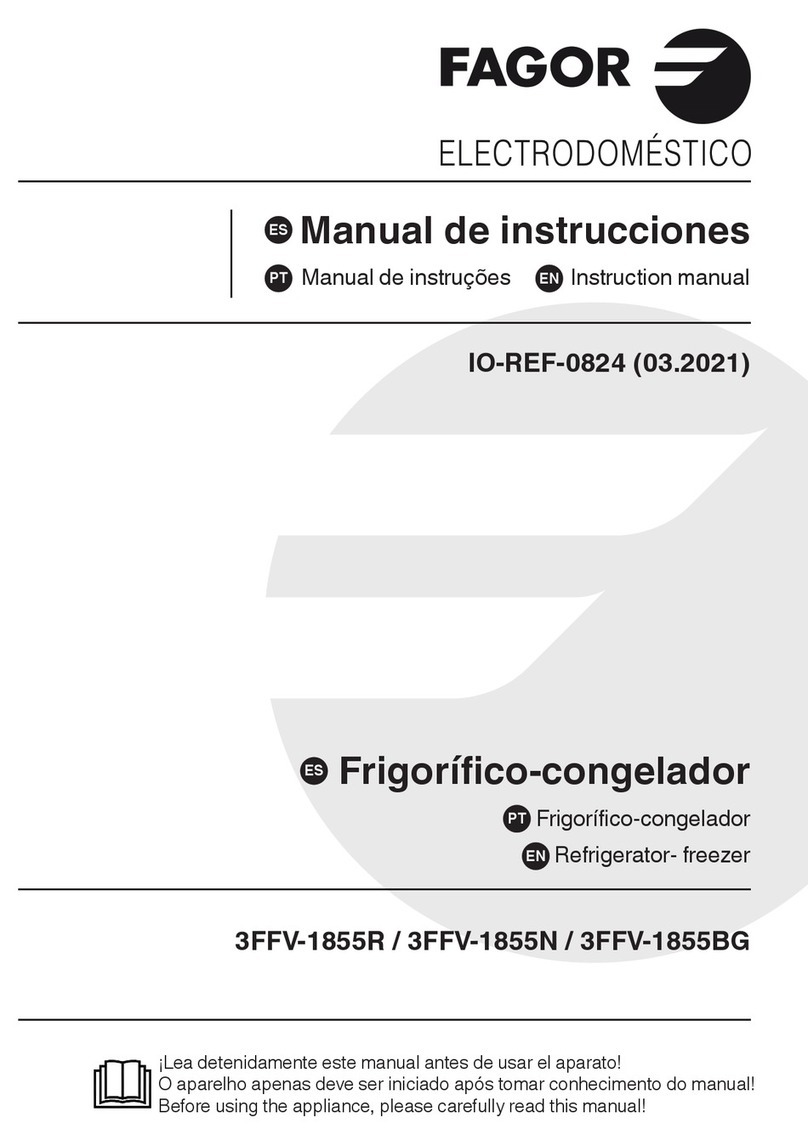
•Remove shelves and wipe them down. Place them in a secure place, and replace them after the
interior of the refrigerator has been wiped clean.
•Wipe the inside and the outside of the refrigerator with a damp cloth, using lukewarm water.
•If the refrigerator is very dirty, wipe it with a neutral detergent first, then use a clean cloth to dry it.
•Do not use other types of detergents, cleaners, abrasive powder or solvents which may contain
chemicals that could damage the lacquer coat and plastic surface of the refrigerator.
Note : Do not wash any part of the refrigerator such as the drip tray, shelves etc in the dishwasher.
All parts must be hand washed with warm soapy water and dry thoroughly.
Care of Plastic Parts
•Ensure that the rubber door gasket is kept clean and free from dirt, grease, etc. Inspect regularly
to ensure it is clean.
•If the plastic parts of the refrigerator are contaminated by oil/grease (animal or vegetable) for a
long time, they will age more quickly and can become brittle and crack easily. They will also emit
bad smell. Therefore, you should get the habit of cleaning it regularly.
Cleaning condenser
•Dust accumulation on the condenser will increase energy consumption.
•The condenser at the back of the refrigerator should be carefully cleaned once a year with a
soft brush or a vacuum cleaner.
Notes: After cleaning the refrigerator; check the following points:
•Are the power supply cord and the plug broken?
•Is the plug set properly?
•Is the earthing wire loose?
•Is there a block on the drainage outlet?
•Is it properly installed?
In case of power failure
•Do not place foods in refrigerator and minimize the times the refrigerator door is opened.
•Due to the increase of temperature in the refrigerator chamber, it is recommended to use the
foods as soon as possible to prevent them from spoiling.
Defrosting the Refrigerator
•Water contained in food or getting into the air inside the bar fridge may form a layer of frost
inside. It will weaken the performance of the bar fridge when the frost is thick, when it is more
than 2mm thick it is recommended to defrost.
•Defrosting in the freezer chamber is operated manually. Before defrosting, take the food, ice
tray and the shelf out into the cold storing chamber temporarily.
•Turn the thermostat to the ‘0’ position and remove the power plug from the power outlet.
•Place the drip tray under the evaporator to collect the water.
•Remove the food and leave the door open.
•When the ice has melted, wipe the interior with a soft cloth, reset the thermostat to MAX, turn
the unit on and replace the food.
•When the unit has reached the desired temperature, reduce the thermostat setting as required.
Note: Never use sharp instruments such as knife to remove ice from the evaporator.
Switching off the appliance
•To switch off the appliance, turn the temperature regulator to position “0”.
•If the appliance is not going to be used for an extended period:
- Remove all refrigerated package
- Turn the temperature regulator to position “0”
- Remove the mains plug or switch off or disconnect the electricity supply.
- Clean thoroughly (see cleaning and care)
7











